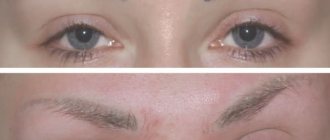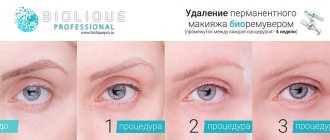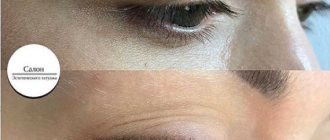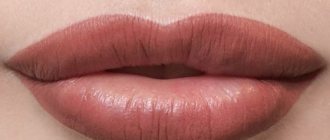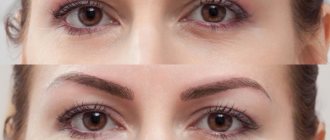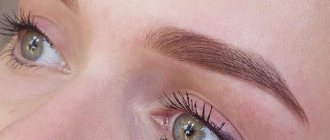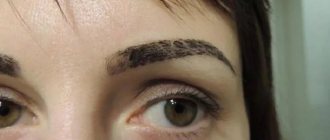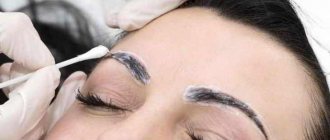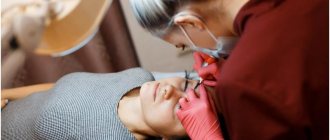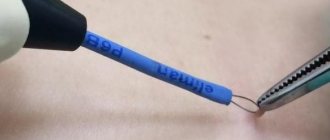Many people are more or less familiar with the possibility of transplanting hair on the head - today it is one of the most popular and effective ways to combat baldness. If we talk about eyebrows, then everything is a little different with them - with extensive loss, it is not always possible to hide the empty areas with cosmetics, and the process of growing new hairs can become a real test and a test of strength for your nerves. What about eyebrow transplant? The procedure has long ceased to be a novelty for transplant doctors - even if you are hearing about it for the first time. Below we tell you more about the techniques, effects and nuances you need to know.
Instagram content
This content can also be viewed on the site it originates from.
Indications
- For those who have scars and hairless scars in the eyebrow area.
- For those who have completely or partially lost their eyebrows as a result of various diseases, chemical and other influences.
- For those who plucked their eyebrows for too long and vigorously and thereby spoiled them and disrupted their growth.
- For those who have serious problems with the shape, width, thickness or symmetry of the eyebrows, which are difficult to correct in other ways.
- For those who want to change their eyebrows for aesthetic reasons.
The essence of the technique
The purpose of this procedure is aesthetic correction to create harmonious facial proportions. With the help of surgical intervention, you can correct the asymmetric location of the eyebrows, their shape, as well as eliminate congenital or acquired defects.
Loss of natural beauty of eyebrows can occur as a result of:
- pregnancy (hormonal changes);
- using cheap cosmetics;
- poor nutrition;
- imbalance;
- aggressive pulling out (follicle is damaged).
Contraindications
- Poor blood clotting.
- Allergy to painkillers such as lidocaine. And without local anesthesia, the procedure is quite problematic.
- Mental disorders associated with a person’s desire to pull out hair on his body (trichotillomania).
- Diabetes.
- Pregnancy and breastfeeding period.
- Too pronounced rough scars in the eyebrow area, since in this case the probability of hair engraftment is very low.
- Autoimmune connective tissue diseases such as dermatomyositis, scleroderma and others.
An eyebrow transplant procedure should not be done if the cause that led to previous hair loss has not been eliminated.
Preparation for hair transplantation
Before transplantation, the doctor determines the donor area for transplantation. Typically, hair is taken from the back of the head, chin and cheeks if there is stubble (in men), behind the ears, on the neck - where the hairs are thinner and shorter. This or that donor zone is selected according to the thickness of the hair. If a patient comes with the problem of partial hair loss on one eyebrow, then the second eyebrow can act as a donor. Before the procedure, the patient must follow a number of rules:
- 2 weeks before the appointed date, you must stop taking medications that stop baldness;
- drugs that affect blood clotting should be eliminated within a week;
- restrictions on smoking and drinking alcohol.
Advantages
- Allows you to restore completely lost eyebrows, regardless of the reasons that led to this.
- Allows you to adjust the shape of your eyebrows and make them more attractive.
- If the shape of the transplanted eyebrows was chosen correctly, you will not need to spend a lot of time correcting them in the future.
- Does not require regular repetitions.
Alternatives
Specialists in the field of cosmetology offer their clients alternative procedures that can give the desired shape to the eyebrows, their list includes:
- False eyebrows . This method is not very convenient and unreliable; it requires daily gluing.
- Extension . This procedure is not recommended for regular use and the effect is short-lived.
- Means for stimulating eyebrow growth . The drugs are ineffective and do not restore hair after chemotherapy or in the scar area.
- Stamping, tattooing, microblading and semi-permanent restoration . This series of procedures does not restore hair, but only creates an imitation of the desired eyebrow shape.
Flaws
- The procedure is painful, although it is performed under local anesthesia. After surgery, pain will continue for at least several days.
- There are quite a lot of contraindications.
- High price.
- Since transplantation is a plastic surgery, it is quite difficult to perform such a procedure.
- Complications may arise.
- You need to wait long enough until the eyebrows take on a pleasant appearance, recover and begin to grow on their own.
- Eyebrows require careful care for a long time.
Expected Result
After the operation and recovery period, the patient will be able to see how the natural arch of the eyebrow emphasizes the contour of the face, and the gaze becomes more expressive.
Experts recommend going through the procedure several times, but after engraftment it will be necessary to carry out a correction (but not earlier than 6 months after the manipulation).
With the help of correction, hairs that have not taken root are added (in this case, from 50 to 100 follicles are used).
What methods are there?
Patchwork (strip method)
This method is currently considered obsolete and is rarely used. It consists of a surgical procedure to remove a defective area of skin from the eyebrow area and transfer there another area of skin taken from the donor area. This new area of skin is fixed using cosmetic sutures.
However, this method is quite complex and not very effective. The transplanted area of skin takes a long time to take root or may not take root at all, hair begins to grow only a few months after engraftment, and the area of the transplanted skin itself loses sensitivity due to damaged nerve endings. In addition, scars remain both in the eyebrow area and in the donor area from where the skin fragment was taken.
Recently, this method has been improved - the skin area is not engrafted entirely, it is divided into small fragments (grafts), and then each of them is individually installed in the right place. However, many disadvantages of the method still remain.
However, this is the only way to restore eyebrow hair in cases where there is a large number of scars in the working area.
The video describes in detail hair transplantation using the strip method.
Seamless transplantation technique (STI)
This technique is less traumatic. Hair grafts are removed from the donor area non-surgically. In this case, one or two hair follicles are usually taken. They are then transferred to and inserted into the incisions made in the eyebrow area. Since the incisions are small, there are no stitches, so the aesthetics of the subsequent result are much higher. In addition, eyebrows quickly take root and begin to grow, without pain, swelling or loss of sensitivity.
This procedure is very painstaking, which is why this transplantation method is much more expensive than a patchwork one. But the result is much better.
HFE technique
This technique is currently the most common. Its popularity is determined by the fact that it is performed without surgery, therefore, there are far fewer side effects and subsequent scars. The transplantation is carried out using very thin micro-instruments, which make it possible to very carefully remove hair follicles from the donor area, without damaging either the skin or nerve endings, and then just as carefully place them in the eyebrow area, without making incisions. As a result, eyebrows heal within a few days and begin to grow quickly.
The video shows the most popular and in demand eyebrow transplant method now - HFE, showing the entire transplantation procedure and the tools used.
Reviews
Below are some reviews. If you have something to say, leave your feedback in the comments below the article, it will be useful to our readers.
“I initially got a tattoo as an experiment , and I had no desire to wear it for several years, so I had to have laser removal .
The procedure was very painful , despite the anesthesia.
I went through four sessions, but I couldn’t completely remove all the pigment , and if I’m without makeup, traces of tattooing can be seen even when standing a couple of meters away from me.”
Yulia Batalina, 24 years old.
“I really
wanted a tattoo , and after looking at beautiful photos on the Internet, I took the risk of going to a rather expensive salon. The result was not just unexpected - it was terrible , and as it turned out later, it was due to the unprofessionalism of the master .the removal done at the expense of the same salon, and I am very glad that in two sessions they managed to almost completely remove the tattoo (only I myself, by looking closely, can see small traces of it).”
Olga Ukraintseva, Michurinsk.
What tools and materials are needed to carry out the procedure?
The tools primarily depend on the method to be used. If we consider the currently most common HFE technique, the set of tools and materials will be as follows:
- surgical marker for drawing the contours of future eyebrows and marking the working area for transplantation;
- a set of microtools consisting of a punch and a needle-implanter;
- microscope for selecting healthy hair follicles and counting grafts;
- lidocaine or other local anesthetic;
- cleansers and disinfectants;
- a special composition for treating follicles for their better engraftment.
How is it performed and how long does the procedure take?
- There is a discussion of the desired shape of the eyebrows and their design. It is determined how many follicles are needed and from which area they will be taken.
- The contours of the eyebrows are drawn with a surgical marker, and the donor area is also outlined.
- Working areas are disinfected, local anesthesia is given in the eyebrow area and in the donor area.
- Using micro-instruments, the required number of follicles is taken from the donor area.
- The taken follicles are examined under a microscope, and the required number of the healthiest ones is selected.
- Suitable hairs are treated with a special composition, which will facilitate their engraftment in the future.
- Small punctures are made in the eyebrow area, into which follicles are placed using special micro-instruments. At the same time, they are placed so that the natural direction of hair growth and angle of inclination are maintained.
The duration of the procedure depends on the number of hairs transferred. The more there are, the longer the procedure. For complete restoration of eyebrows it may take up to 5-6 hours, for partial restoration - 2-3 hours.
Useful video
To find out what folk remedies will help restore eyebrows, watch this video:
Similar articles
- Frontoplasty: before and after correction of the forehead, eyebrows...
Frontoplasty surgery before and after significantly changes appearance. Correction of the forehead and brow ridges is not an easy and expensive procedure. It does not matter whether the plan is to reduce or enlarge these parts of the face. Read more - Modern methods of hair transplantation: hfe, seamless…
Bald spots or scars on the head do not give confidence. There are modern effective hair transplant methods that can correct any imperfections. Among them are hfe, fue seamless, patchwork. Which is better? Read more
- Forehead and eyebrow lift: endoscopic, threads...
Sometimes a forehead and eyebrow lift is the best solution to restore attractiveness. It can be endoscopic, endofront lifting, or threads. Why did my eyelids droop after a lift? What other complications could there be? Read more
- Hair transplant on the head: how it is done for men...
A scalp hair transplant may be required at any age, as both men and women suffer from alopecia. How is surgery performed to transplant a scar, from the body to the head, from the beard to the head? Read more
How to care for eyebrows after the procedure?
- Immediately after the procedure, eyebrows should not be wet, but they must be washed using special products several times a day for a week.
- Once a day you need to apply a healing ointment to your eyebrows.
- The crusts that form cannot be peeled off. In addition, you should not scratch your eyebrows.
- During the week, you should avoid intense physical activity, work at an angle, and be exposed to heat.
- In the future, eyebrows must be combed regularly, styled with gel if necessary, and trimmed with nail scissors.
Rehabilitation period
The donor area is restored within 3 - 5 days. The transplanted follicles take root within the first month. The first days after the procedure, it is necessary to avoid contact of the transplanted hair with any surfaces.
For 10 days, it is necessary to avoid activities that cause a sharp change in blood supply and increased sweating. Smoking and drinking alcohol are not recommended. It is also recommended to avoid prolonged exposure to open sun. Light sports are allowed 10 to 15 days after transplantation.
In addition, for the first 3 weeks you should exclude visiting the pool and sauna. After complete healing, the skin of the eyebrows remains smooth, maintaining a natural appearance.
Eyebrow transplant. How is eyebrow transplant performed? Eyebrow transplantation. Ivan Pavlovich Chesalin
What eyebrows look like after transplantation. Eyebrows the day after transplant. Eyebrow care.
